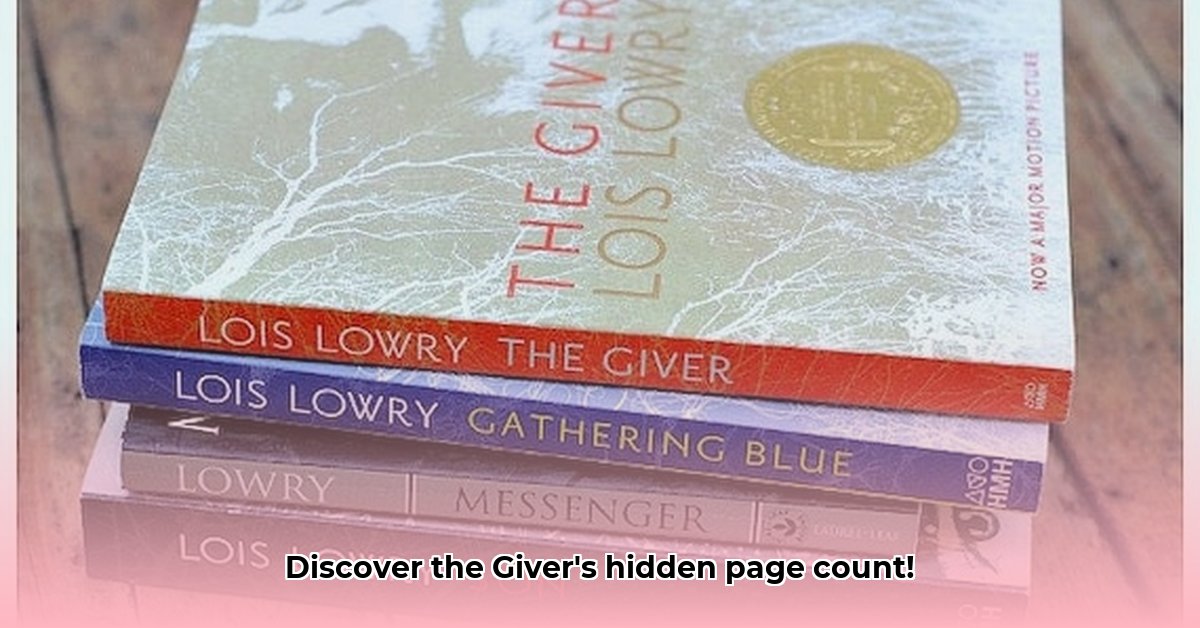
The Giver Page Count: Unlocking the Mystery
Ever wondered how many pages are in The Giver? The answer isn't straightforward. Different editions vary, ranging from approximately 192 to 224 pages. This variation isn't due to errors; it stems from factors like font size, paper type, and publisher choices. Understanding these variations provides a deeper appreciation of the book's impact and its enduring relevance. How does this seemingly small detail affect our understanding of Lois Lowry's classic dystopian novel?
Why the Page Count Matters: More Than Just Numbers
The page count of The Giver significantly influences the reader's experience. Shorter books, like The Giver, often create a sense of urgency and immediacy, focusing the reader's attention on key events and amplifying their impact. Longer novels, conversely, allow for more detailed world-building and character development. This book illustrates how a concise narrative can effectively deliver a powerful message. Could The Giver's potent themes resonate as strongly with a significantly altered page count?
A Tale of Two (or More) Editions: Why the Numbers Vary
Different editions of The Giver exhibit varying page counts because of several factors. Font size plays a crucial role; larger fonts increase page count, while smaller fonts decrease it. The type of paper used (thicker paper increases page count, while thinner paper decreases it) and publisher design choices also impact the final page count. These variations are akin to clothing sizes—the same design in different sizes fits various needs.
Comparing The Giver to Other Young Adult Dystopian Novels
Comparing The Giver's page count to other young adult dystopian novels provides valuable context. While The Giver typically falls between 192-224 pages, books like The Hunger Games (approximately 374 pages) and Divergent (approximately 488 pages) are considerably longer. This difference can reflect the scope and complexity of each story, suggesting that The Giver's concise length prioritizes impact and thematic focus.
| Book Title | Approximate Page Count |
|---|---|
| The Giver | 192-224 |
| The Hunger Games | 374 |
| Divergent | 488 |
| The Road | 296 |
Page Count, Reading Level, and Target Audience
Page count correlates with reading level and target audience. Shorter books often target younger readers, offering a more accessible reading experience. While The Giver's shorter length enhances accessibility, its thematic depth and complexity engage readers of all ages. The book's brevity doesn't equate to simplification; it allows for a focused, potent narrative.
Is a Shorter Book a Simpler Story? Absolutely Not!
The brevity of The Giver doesn't signify a simplistic story. Lois Lowry skillfully weaves profound themes and intricate ideas into a concise narrative. The book's focused length, far from being a limitation, actually enhances the impact of its message, making it all the more memorable and thought-provoking.
Pacing, Depth, and the Art of Concise Storytelling
The Giver's concise structure contributes to its engaging pace. The story moves swiftly, yet allows ample time for world-building and thematic development. This balance between brevity and depth showcases Lowry's masterful storytelling, proving that a powerful narrative doesn't require excessive length.
Readers of All Ages: Why The Giver Resonates
The Giver's accessible length appeals to younger readers, while its rich themes and complex ideas resonate equally with older readers. This broad appeal speaks to the power and enduring quality of Lowry's concise yet profound narrative.
"Sameness" and the Significance of Brevity
The book's short length directly mirrors its central theme of "Sameness." The controlled, restricted community is reflected in the concise structure of the novel, underscoring the stifling nature of the dystopian society.
Conclusion: More Than Just a Number, a Key to Understanding
Analyzing The Giver's page count offers valuable insight into the novel's artistic merit and impact. Comparing its length to other similar books illuminates the nuances of storytelling, pacing, and the overall effect on the reader's experience. The page count, therefore, is not simply a numerical detail; it is a crucial element of the book's overall effectiveness. It's a testament to the power of concise storytelling and its ability to deliver a powerful and lasting message.